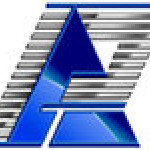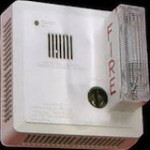11-11-2014 - Electric Power Plant Fundamentals Webinar - Online, Live
Training Provider: APT Corporate Training Services
Dates: TU Nov 11, WE Nov 12, TU Nov 18, WE Nov 19 from 12:00pm to 4:00pm ET
Location: Webinar, Live
 No Reviews
No Reviews
We're sorry, but registration for this event has ended
View Upcoming Electric Power Plant Fundamentals Webinar In Online, Live| TICKET TYPE | PRICE | QUANTITY |
|---|---|---|
|
One Workshop Ticket more info» | $695.00 | Registration Ended |
| Registration Ended | ||
Why Should You Take This Electric Power Plant Fundamentals webinar?
In this Electric Power Plant Fundamentals webinar, the student is presented with an introduction to power plants and their basic water and electrical systems. The physical properties of water, the water cycle, and how the various states of water are created and used to drive steam turbines are also discussed in this course.
The different types of power plants are discussed including fossil fuels, renewable energy, nuclear, combined cycle, geothermal, and others used and their characteristics regarding power production are compared. The air-pollution ramifications, control process and environmental monitoring equipment are presented as they apply to regulatory statutes. The key factors and operating parameters regarding the generation of electrical power from steam or other turbines are discussed in this course.
Target Audience: People who want learn how various Power Plants use different natural resources to generate electrical energy will need this course. People who need to know the theoretical, physical, operational and efficiency differences between the various types of power plants, and individuals who are interested in pursuing job positions in the power production industry.
Learning Outcomes:
- Student will be able to describe the operation of various types of electric power generating plants used in large grid type power systems (steam, combustion, nuclear, and green)
- Explain the application and processes of the various water systems used in power plants that are required to produce electrical power
- Discuss the air pollution and control techniques used with the various power plants
- Explain how the various energy resources are converted to electrical energy including the generation of electricity and its associated components
- Student will be able to identify and describe the basic components of a steam power plant
- The basic components of a steam turbine will be described, how it generates electric power, and the importance of maintain frequency and voltage as it connects to high voltage transmission systems
- Student will learn about the importance of 3-phase high voltage circuit breakers as the main point of transfer from a power plant to the external high voltage transmission system
- Student will be able to explain how single generator and multi-generator concepts are used for analysis of power systems
- Students will be able to explain and discuss the importance of generator synchronization and its importance to power transfer in interconnected power systems
- Power regulation is an important function of power plant operation, as such students will be introduced to the local and regional regulating authorities and how they determine how power plants are operated
Benefits of Completing Training:
- Students learn valuable knowledge and skills in modern power plant technologies needed to expand and diversify their career opportunities in the power industry.
- Students obtain a working knowledge of the different sub-systems needed by the various types of Power Plants to generate electrical energy
Prerequisites: There are no prerequisites for taking this course
Chapter 1 - Introduction to Power Plants:
This chapter discusses the various types of power plants used in large bulk electric power systems like the ones used in North America power grids.
Objectives:
- Describe each of the basic components that make up a steam power plant
- Describe the different types of valves and their appropriate applications
- Explain the meaning and purpose of heat exchangers in steam plants
- Discuss the difference between sensible and latent heat
- Discuss electrical applications of panel breakers through station breakers
- Identify the components of a steam turbine
- Explain the difference between boilers and furnaces
Chapter 2 - Physical Properties of Water:
This chapter discusses the various water systems used in power production and their physical properties during the various processes.
Objectives:
- Discuss the physical properties of steam
- Explain the difference between atmospheric and gauge pressure
- Discuss the physical properties and phases of water
- Describe the "Basic Water Cycle"
- Discuss the "Energy Conversion Process"
- Explain the four phases of the steam/water cycle
Chapter 3 - Steam Plant Equipment:
The various components and sub-systems used in the production of electricity in the various types of power plants are discussed in this chapter.
Objectives:
- Explain the Rankine Cycle and how it relates to steam power plants
- Describe the different stages in the water cycle; boiling point, saturation triple point, and others
- Describe the operation of a high pressure and high temperature boiler
- Identify the components and applications of boiler and furnaces
- Explain the purpose of "super heaters"
- Describe the purpose of an "economizer"
- Explain the purpose application of a "supercritical boiler"
- Identify the components of a steam turbine
- Describe the different types of turbines (impulse, reaction, etc.)
- Discuss the turbine steam flow process
- Explain the different types of boilers and their applications
- Describe the "condensate and feedwater systems" in a power plant
- Describe the various types of heaters and heat exchangers
- Describe the purpose of the "feedwater pump"
- Discuss the various types, categories and processes of "cooling towers"
- Explain the overall operation of a large scale steam power plant
Chapter 4 - Fossil Fuels:
This chapter describes the various components and operating systems used in coal fired power plants.
Objectives:
- Describe the various types of "fossil fuels"
- Discuss the energy consumption percentages of the different fossil fuels
- Explain the "coal handling system" and all its associated production equipment
- Discuss stacking and reclaiming, including stackers
- Explain the purpose of a magnetic separator and how it works
- Describe bunkers and tripper rooms
- Explain how coal is pulverized
- Discuss how natural gas is used as a fossil fuel
Chapter 5 - Air Pollution and Control:
Air pollution and control of air pollution is the subject for this chapter. The information is presented according to the different types of power plant.
Objectives:
- Discuss all the different "air pollution control devices"
- Discuss the air pollution particulates (such as nitrogen oxides, sulfur dioxides, etc.)
- Explain how air pollutants are controlled
- Explain how wet and dry scrubbers work
- Describe how "electrostatic precipitators" work and their purpose
- Explain what "bag filters" do to reduce air pollution
- Discuss what emission monitor systems do
Chapter 6 - Combustion Turbines:
The student learns about combustion turbines used in large scale power systems in this chapter; description, efficiencies and operating characteristics.
Objectives:
- Describe the overall operation of combustion turbines
- Describe the "Brayton cycle" and how it applies to combustion turbines
- Discuss the different fuel types used in combustion turbines
- Describe the basic operating characteristics of combustion turbines
- Explain how "Combined Cycle" plants work and their advantages
Chapter 7 - Nuclear Power:
The student leans about the various nuclear power plants used in the world today to produce energy into power grids. All the fundamentals are covered such that a student understands the advantages and disadvantages of the different nuclear plants and can relate to the political issues surrounding nuclear power.
Objectives:
- Discuss the added regulatory requirements of nuclear power
- Explain what is meant by "fusion" and "fission" plants and which one is used to generate power
- Explain what is meant by "pressurized water reactor"
- Explain what is meant by "boiling water reactor"
- Discuss the advantages and disadvantages of the various reactor types
- Explain what is meant by the term "SCRAM"
Chapter 8 - Green Power:
This chapter discusses the green energy sources in use today whether small scale still considered experimental (i.e., tidal) to large scale that is fully deployed with installations still growing (i.e., wind).
Objectives:
- Explain what is meant by "Green Energy"
- Explain what is meant by "anaerobic digestion"
- Explain what is meant by "geothermal power" and how it works
- Discuss wind power, types, sizes, design considerations, and how wind generators produce ac power
- Discuss "wind at sea" generation facilities
- Discuss the different types of "hydro generation"
- Explain what is meant by "pump storage" plants
- Discuss "tidal energy" power and the various options
- Explain the different types of "solar power" energy techniques
- Discuss "liquid and solid biofuels"
- Discuss "biogas" and "waste incineration"
Chapter 9 - Generators:
This chapter discusses the generators used in power plants to convert the various prime movers into electrical energy. The generator components, electrical theories and operating characteristics of the various types of electric generators are discussed.
Objectives:
- Discuss the two "physical laws" that describe how electric power systems work
- Explain how "three-phase" generators work
- Discuss the major components of a generator
- Explain what a "power system stabilizer" does to improve system stability
- Explain what the "hydrogen system" does and why it is needed
- Discuss incremental "incremental heat rate" curves
- Discuss "incremental cost" curves
- Describe how generators are loaded and share load
- Discuss generator stability
- Explain what is meant by "speed droop"
- Discuss a generator"s "D-Curves"
- Explain what is meant by "distributed generation"
| COURSE LOGISTICS | |
|---|---|
| Certificates | 1-3 days after course completion |
| Food | Snacks will be provided |
This course is conducted as a live instructor-led webinar. Further details will be provided to you prior to the course.
TU Nov 11, WE Nov 12, TU Nov 18, WE Nov 19 from 12:00pm to 4:00pm ET

This partner no longer posts classes on Zack Academy. For a complete list of classes, please visit our course catalog.
APT Corporate Training Services was founded in 1993 by CEO Steven W. Blume to offer electric power and telecommunications training. In 2003 Applied Professional Training became a Distance Education and Training Council accredited institution. APT has gained the reputation as being the premier technical training provider for the telecommunications and electric power industries, and recently added renewable energy training to its repertoire. APT not only offers professional certificates and college degrees, but also offers career-oriented courses designed to enhance employee knowledge, skills, and abilities and proctors industry certifications related to both current and emerging technologies.

Questions? 954-400-0595


